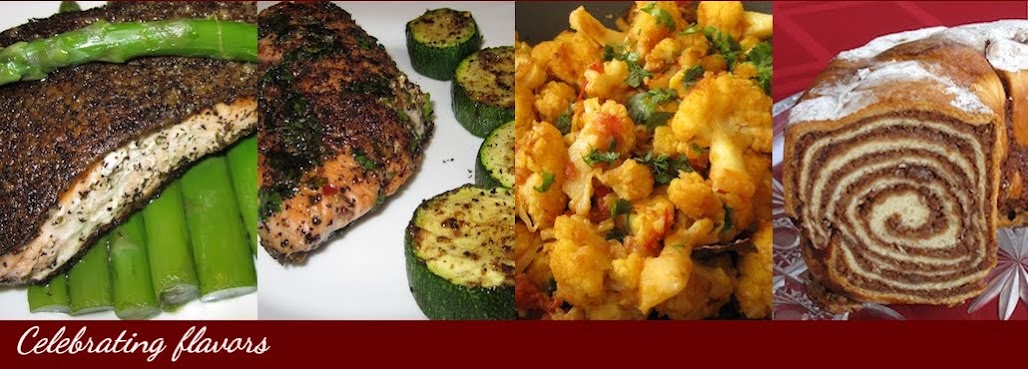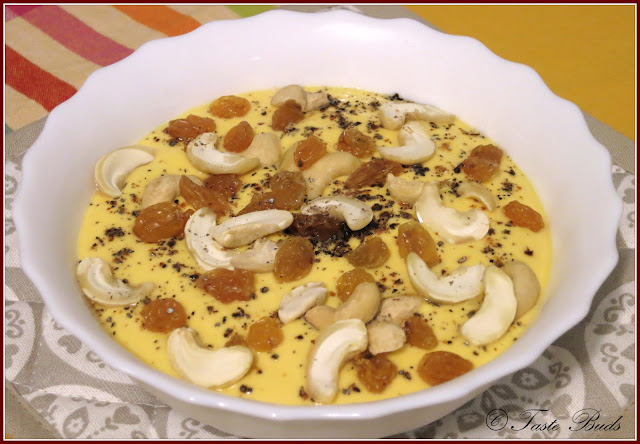Now a food blog by a Bengali without Luchi is
incomplete. These deep fried puffed little breads are weakness for all us
Bengalese. A related cousin of puri, it differs from the same in only the type
of flour used. While puri is made from whole-wheat flour (atta), luchi
is made from refined all-purpose flour (maida). Every Sunday morning,
these puffed ‘breadlets’ adorn the breakfast plates in any Bengali household
hand in hand with alu-r torkari (mild potato curry) or any other side dish
of choice. Sometimes it is a special treat along with the glorious kasha
mangsho ( a spicy dry mutton preparation). Traditionally they are
deep-fried in ghee. However, many houses these days use refined oil to fry them.
As the air puffs the flat dough discs into perfect balls and an enticing smell
fills the air, the simple dough transforms into its light whitish-golden
avatar. Luchi has been such a part of my everyday life that I had taken it for
somewhat granted. It was only when I moved away from home during my college
years, looking at the luchi-less breakfast plates on Sunday mornings, that I
realized how much a place it held in my food world. Making luchis on my own
went through a couple of trials until I could make them all perfectly round.
The right amount of oil for making the dough, the ideal temperature of the
heated oil for deep-frying, the gentle pressure and whirling motion to let them
puff in perfect rounds, it took some practice to master those. And therefore,
when I recently took pictures of the luchis for the blog and decided to finally write down the recipe, I realized the
description to be inadequate. Anf hence, there was this bit more wait until I made
luchis again and requested Blaž to take a video while I fry them.
Read carefully the instructions and watch the short video. Don’t be
disheartened if the first try doesn’t give the perfect results, one just needs
a little bit of practice to have these delicate Bengali breads on the table.
You can print the recipe for your kitchen here: PRINTABLE RECIPE
INGREDIENTS:
(Makes 10 [or 12 small])
(Makes 10 [or 12 small])
1cup refined flour
1pinch salt
1tbsp oil
Warm water
Oil for deep-frying
INSTRUCTIONS:
1.
Put the flour in a big bowl. Add a pinch of salt
and 1tbsp of oil to the flour. Rub the flour and oil between fingers to mix
well and make the flour lighter and fluffier. Rub for a minute or so. This is a
crucial step as over-rubbing or adding too much oil will make the luchi
crispier and difficult to puff.
2.
Make a hole in middle. Slowly add warm water and
knead into a smooth tight dough. Divide the dough into 10 (or 12 for smaller
luchis) balls.
3.
In a small deep wok heat oil for deep-frying. The
oil should be hot (not smoking) but fry the luchi on medium heat so that they do
not brown too much before puffing and cooking well. (Test the oil with a tiny
pinch of dough pressed flat between fingers. It should fry and float immediately but not
turn brown.)
4.
Roll each dough ball into a thin circle of
around 5 inch. Use a bit of oil while rolling to prevent sticking.
5.
Gently add the rolled luchi into the hot oil.
With a round-slotted spoon keep the luchi under hot oil and keep on pressing
gently in a whirling motion until the luchi puffs into a circle. [Check the video below.]
6.
Flip and let the other side fry for a few more
seconds. This time, do not press down the luchi inside the oil but instead let
it float. Each luchi will take about 20-30 seconds to fry.
7.
Repeat the steps 4-6 for the other dough balls. Roll and fry the luchis simultaneously. (Do not keep them waiting for long after
rolling as it will make the rolled luchi dry.)
NOTE:
Do not make the dough long before frying the luchis. If you need to keep
the dough standing, keep it covered under a moist cloth.
How to fry Luchi:













.jpg)

